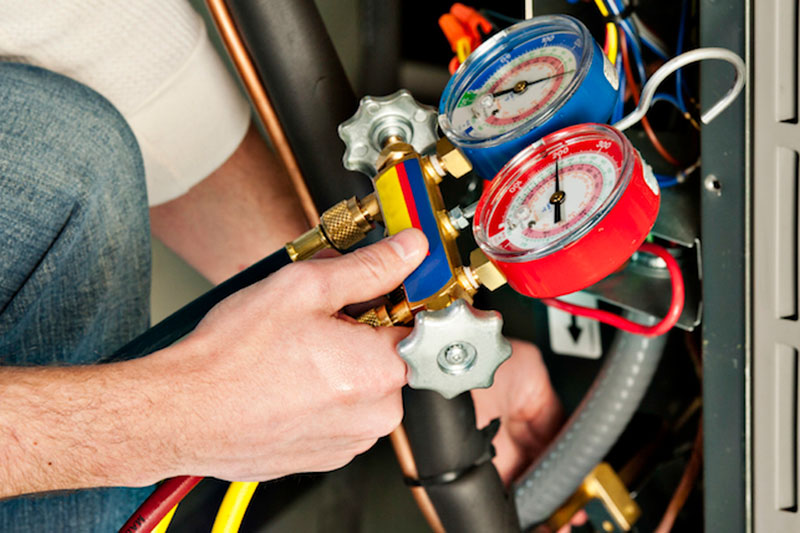
You might not think a lot about how your air conditioner operates, but it depends on refrigerant to keep your house fresh. This refrigerant is subject to environmental regulation, as it contains chemicals.
Based on when your air conditioner was put in, it may use R-22, R-410A or R-32 refrigerant. We’ll discuss the differences and which air conditioner refrigerants are being phased out in Safford, as well as how these phaseouts have on influence on you.
What’s R-22 and Why Is It Discontinued?
If your air conditioner was installed before 2010, it probably has Freon®. You can find out if your air conditioner has it by reaching us at 928-432-6018. You can also examine the name plate on your air conditioner condenser, which is situated outside your home. This sticker will contain info on what kind of refrigerant your AC uses.
Freon, which is also called R-22, contains chlorine. Scientists consider this chemical to be damaging to the earth’s ozone layer and one that results in global warming. The Environmental Protection Agency, which governs refrigerants in the United States, barred its manufacture and import in January 2020.
I Have a R-22 Air Conditioner. Should I Replace It?
It differs. If your air conditioning is cooling fine, you can continue to use it. With routine air conditioner maintenance, you can expect your AC to work around 15–20 years. However, the Department of Energy reports that replacing a 10-year-old air conditioner could save you 20–40% on yearly cooling bills!
If you don’t replace your air conditioner, it may create an issue if you need air conditioning repair down the road, specifically for refrigerant. Repairs might be more expensive, since only small quantities of recycled and reclaimed R-22 is on hand.
With the discontinuation of R-22, many new air conditioners now use Puron®. Also known as R-410A, this refrigerant was created to keep the ozone layer healthy. Since it requires a varying pressure level, it doesn’t work with air conditioners that use R-22 for cooling.
However, Puron still has the potential to lead to global warming. As a result, it may also sometime be ended. Although it hasn’t been communicated yet for residential air conditioners, it’s likely sometime this decade.
What Refrigerant Will Replace R-410A?
In preparation of the discontinuation, some brands have begun using R-32 in new air conditioners. This refrigerant ranks low for global warming potential—around one-third less than R-410A. And it also reduces energy use by around 10%, according to the Intergovernmental Panel on Climate Change’s Fourth Assessment Report. That’s savings that may be sent on to you through your energy costs.
B&D Air Conditioning Can Provide Support with All Your Air Conditioning Needs
In brief, the changes to air conditioner refrigerant probably won’t concern you a whole lot until you need repairs. But as we discussed earlier, refrigerant-related repairs can be more expensive since there are the low levels on hand.
Not to mention, your air conditioner frequently stops working at the worst time, often on the muggiest day when we’re experiencing lots of other requests for AC repair.
If your air conditioner relies on a discontinued refrigerant or is more than 15 years old, we advise installing an up-to-date, energy-efficient air conditioner. This delivers a trouble-free summer and may even lower your cooling expenses, especially if you select an ENERGY STAR®-rated model. Plus, B&D Air Conditioning offers many financing programs to make your new air conditioner even more affordable. Contact us at 928-432-6018 to begin right away with a free estimate.
